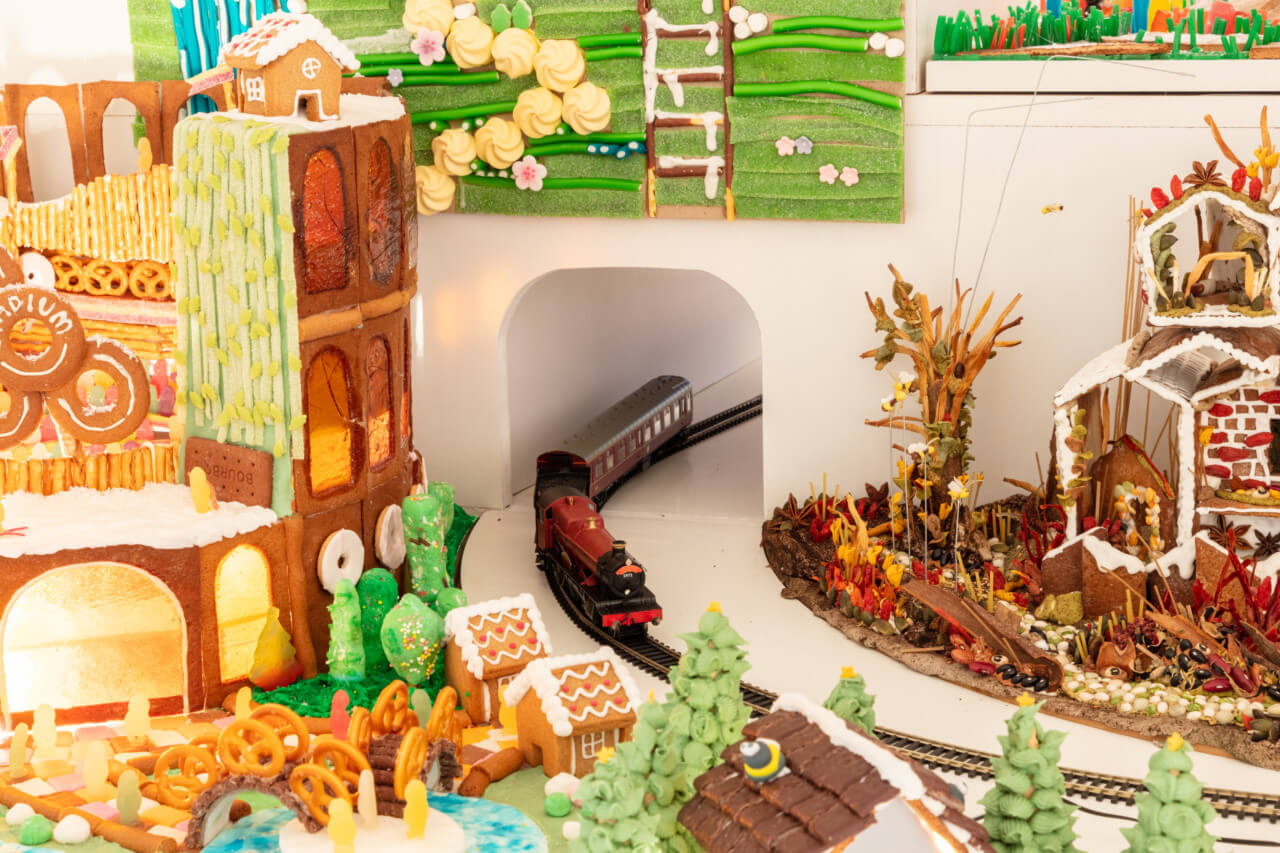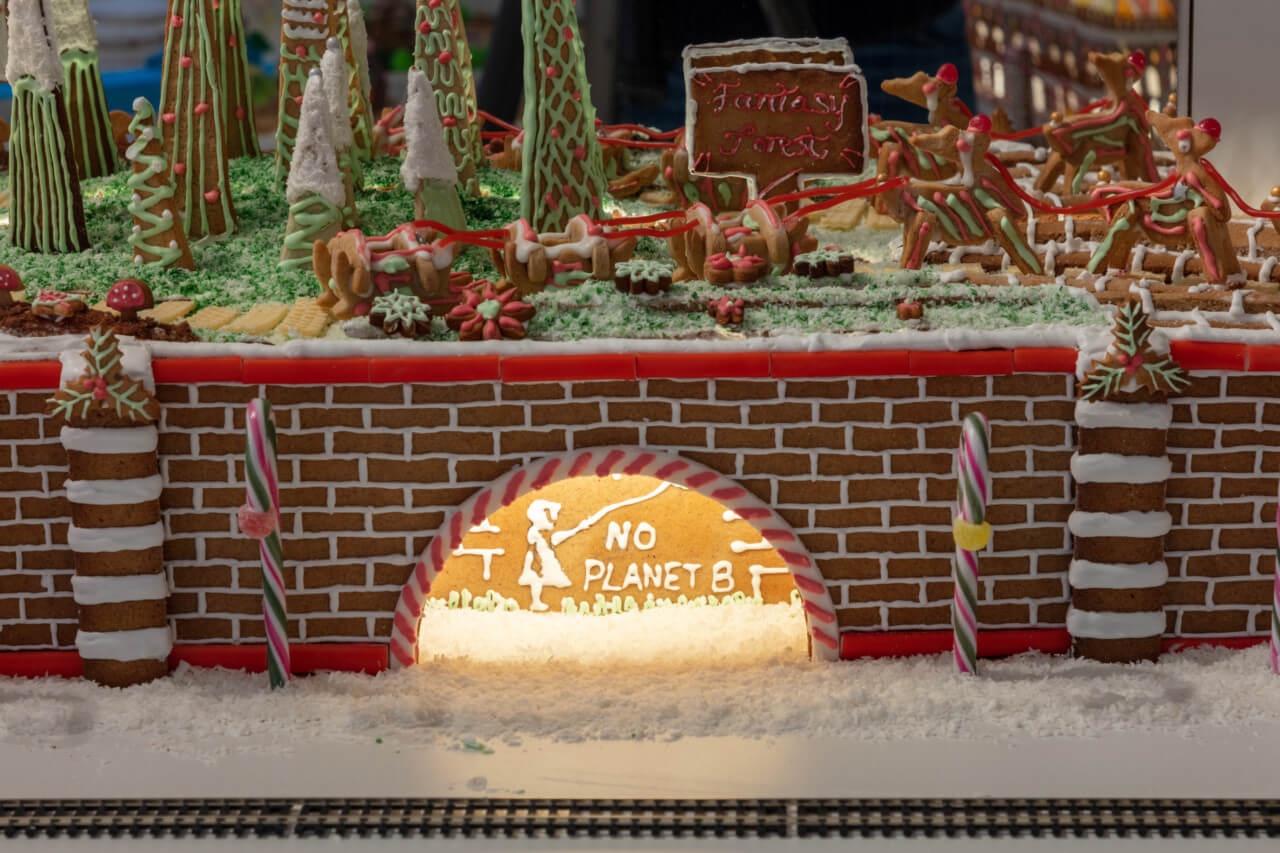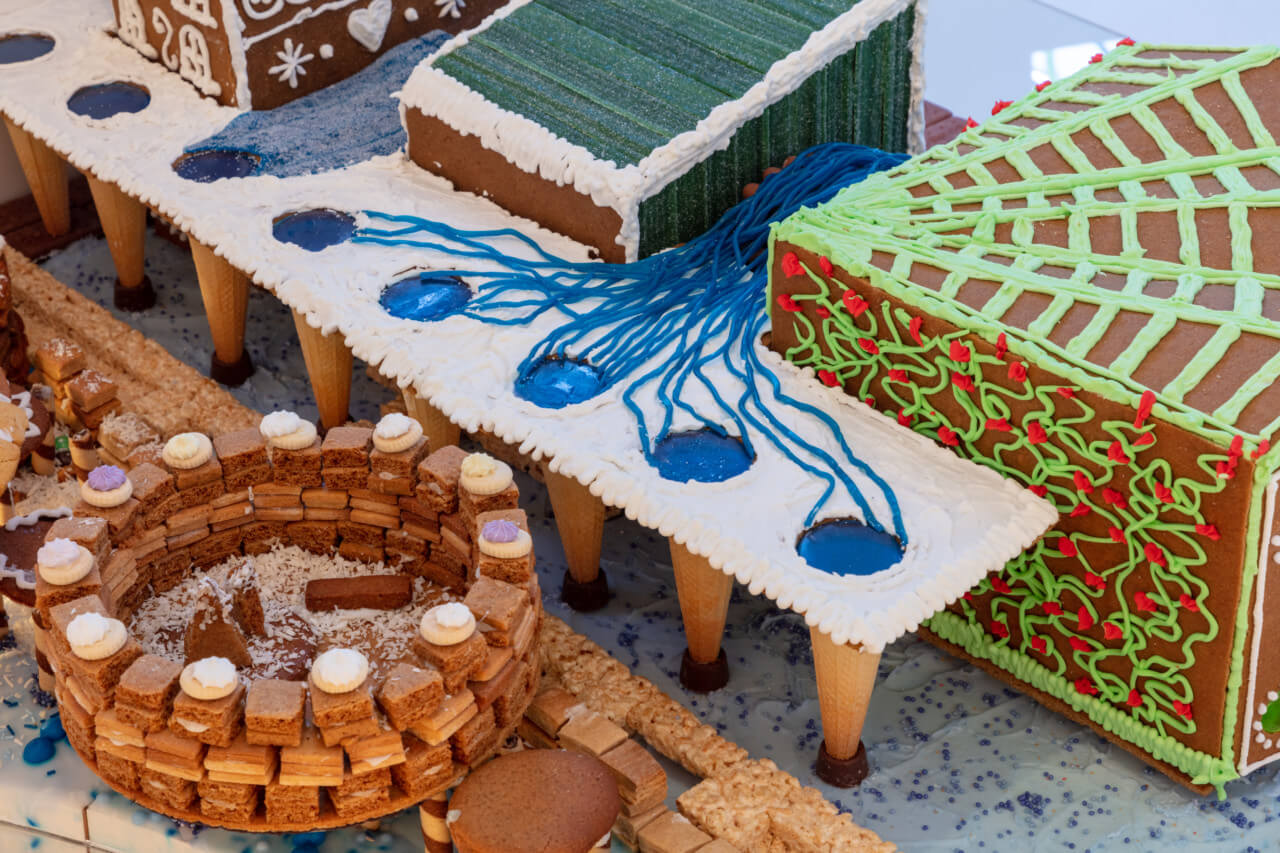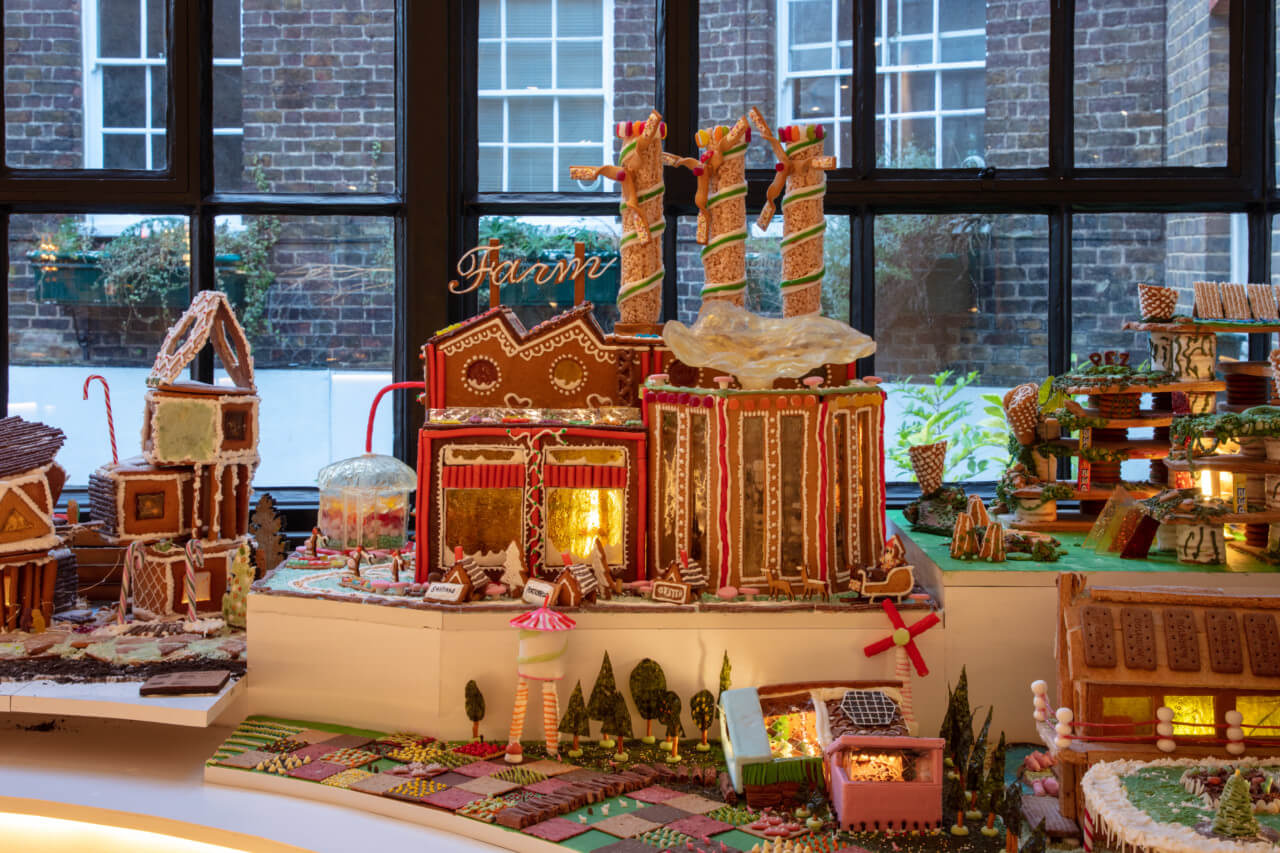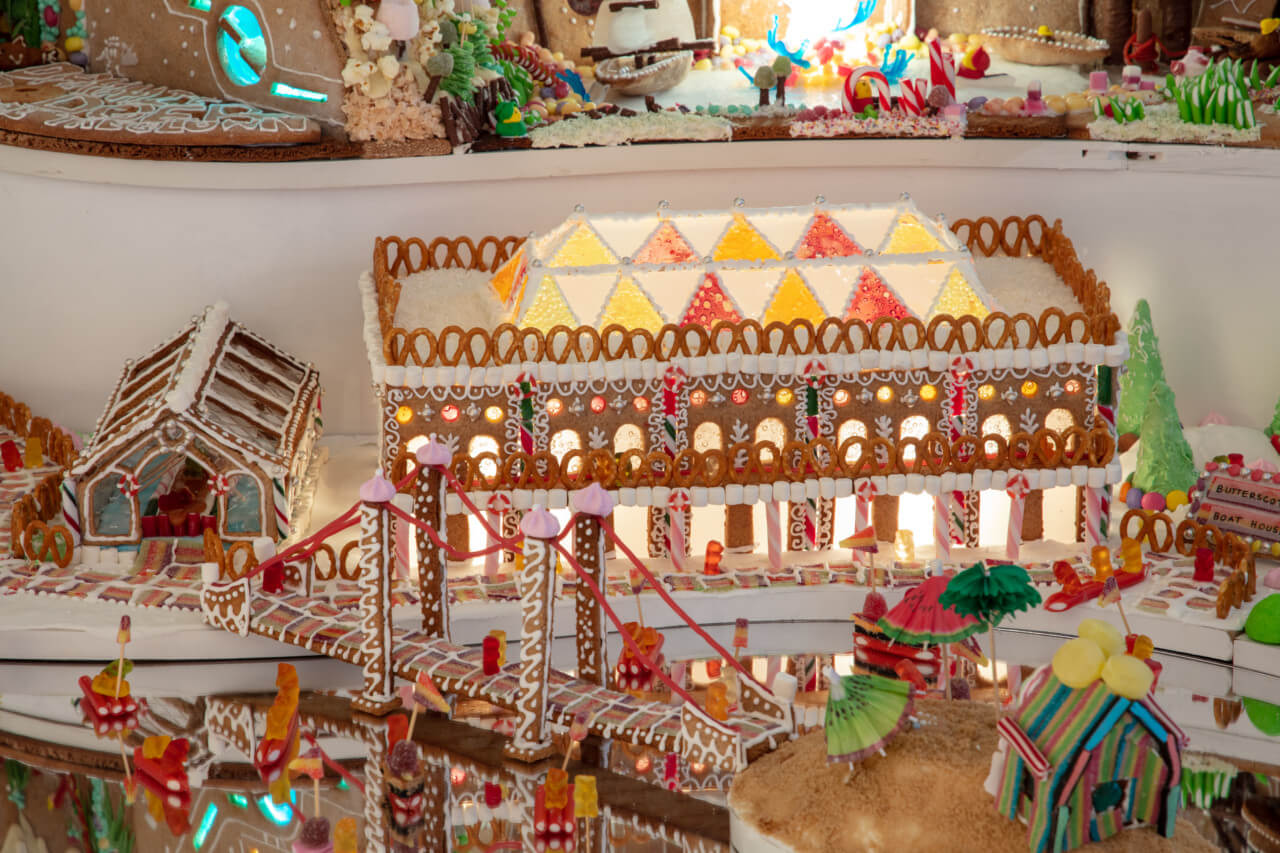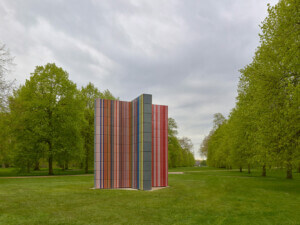After being scrapped in 2020 for obvious reasons, the London-based nonprofit Museum of Architecture (MoA) has returned with its fifth edition of Gingerbread City, an exhibition of candy-coated, frosting-framed works of edible architecture.
Like in years past, the 2021 edition of MoA’s wildly popular cake-based design extravaganza, which opened on December 4 and runs through January 9 at a pop-up exhibition space located at 6–7 Motcomb Street in London’s Belgravia district, has attracted the talents of a slew of architecture, landscape architecture, engineering, and design practices. Together, their individual contributions have brought to life a full-on mini-urban landscape populated by over 100 individual gingerbread structures and featuring a quartet of model trains by Hornby. Participating firms—many of them returning—include Foster + Partners, Kohn Pedersen Fox, Hopkins Architects, Zaha Hadid Architects, Eckersley O’Callaghan, and NBBJ.
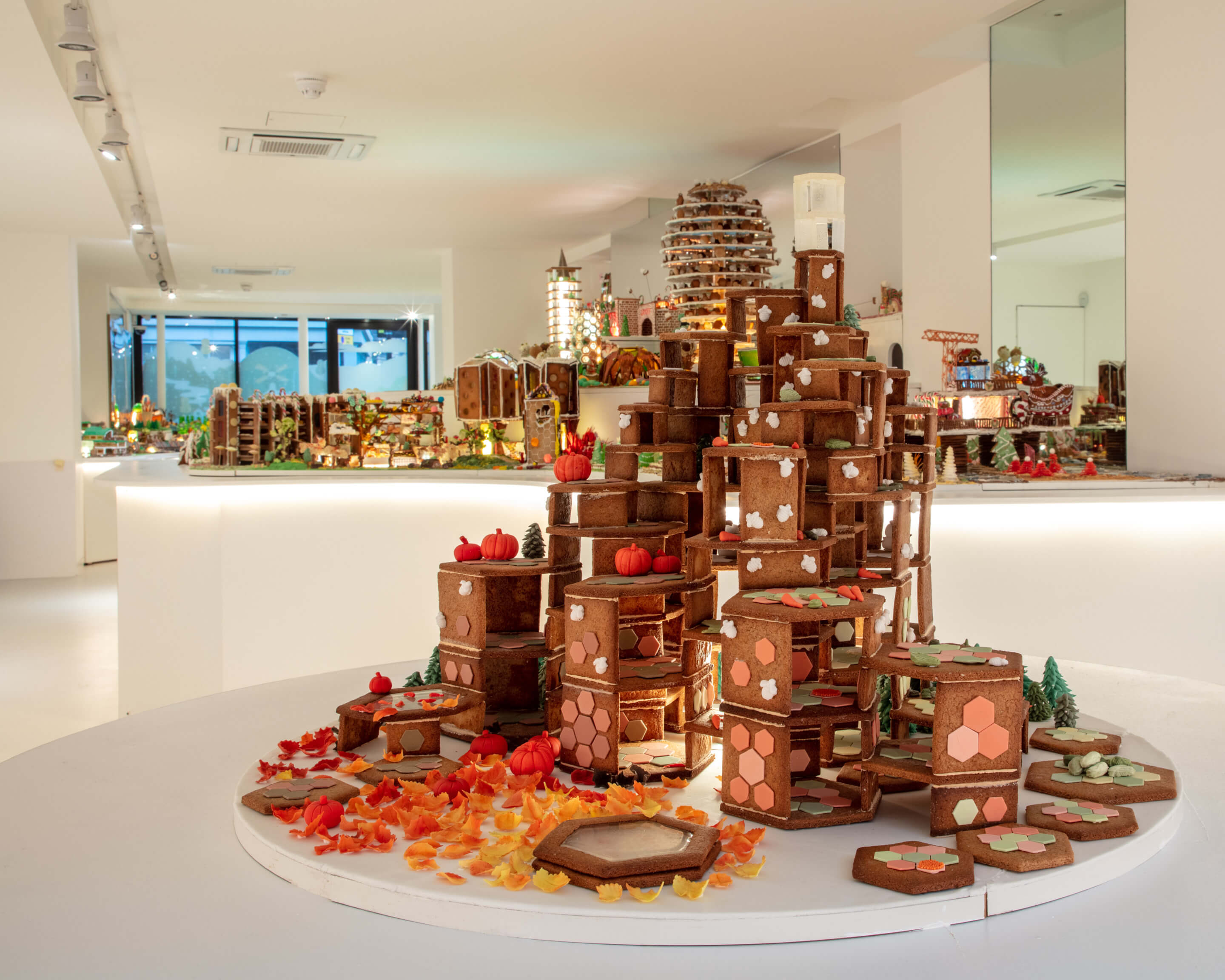
To be clear, this is not a haphazardly thrown-together assemblage of gumdrop-topped, icing-insulated edifices. Gingerbread City 2021 has been meticulously master-planned by Madeleine Kessler Architecture in collaboration with Tibbalds Planning and Urban Design and features five distinct environmental zones (Forest and the Green Belt, Forgotten Spaces/City Pollinators, Urban Farming, Wilder Urban River Bank and Suburban Riverbank, and Flood Plain) that correspond with this edition’s overarching theme of “Nature in the City: Re-wilding and creating space for biodiversity and balance.” As noted in a press announcement, Gingerbread City 2021 “explores the importance of nature in cities and how green interventions can improve the places we live and work, repair damaged or degraded landscapes and help mitigate against climate change.” (The 2019 theme was transportation.)
“We are so pleased to bring The Gingerbread City to life again this year and showcase such a brilliant range of innovative and sustainable design ideas,” said MoA founder and direct Melissa Woolford in a statement. “It is so exciting to see such creativity from those working in the built environment. I am sure our visitors will go home feeling really inspired by how introducing more nature into cities can make them happier and healthier places to live and work.”
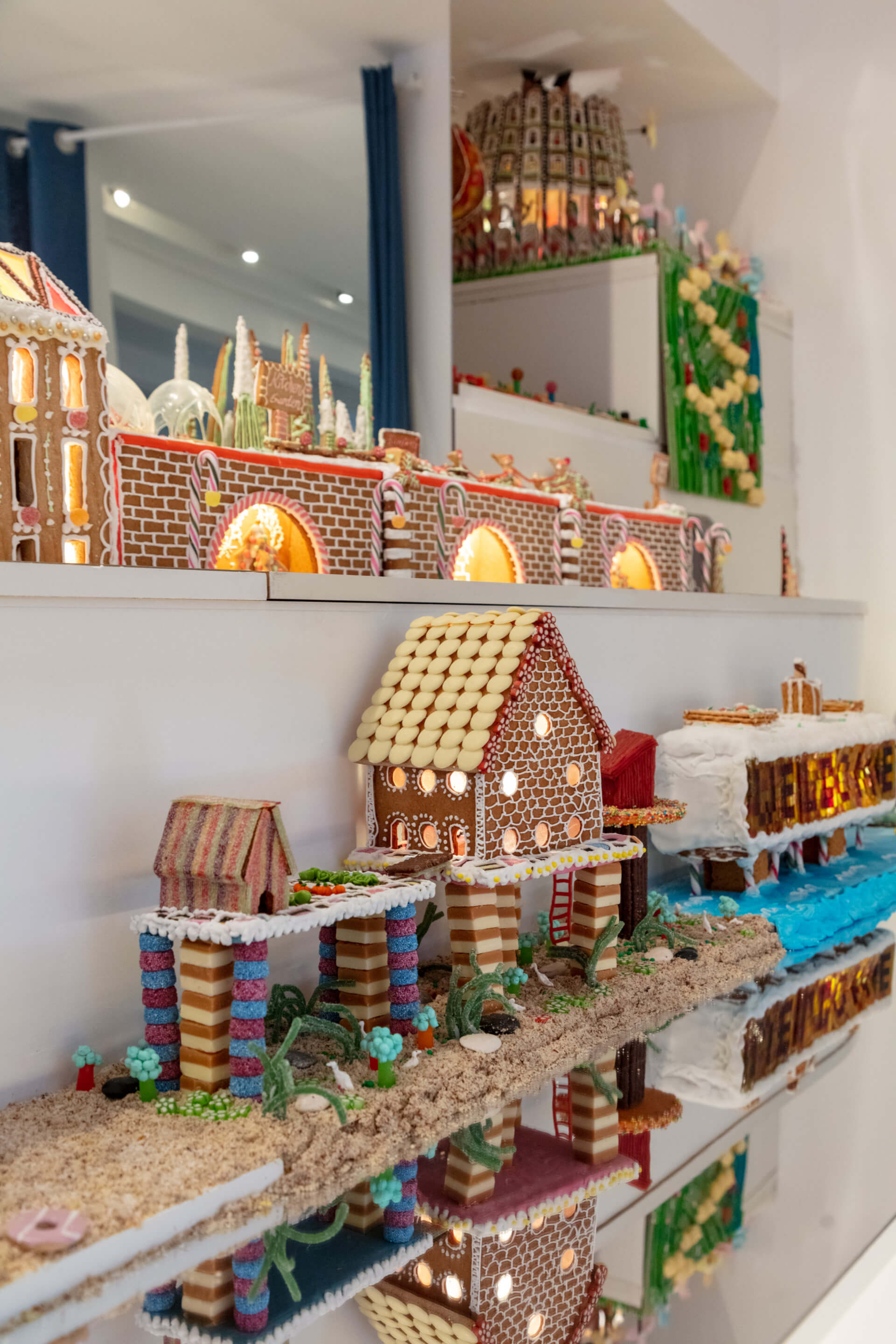
Participants were invited to purchase a plot within one of five environmental zones; the price of the plot depends on it type/size, ranging from “tiny’ to “super landmark.” (The buy-in cost goes directly to MoA and is used for operational costs associated with month-plus-long exhibition.) In addition to site specifications, participants receive a CAD Plan, sketch-up model, and master plan brief along with baking instructions/recipes, LED lights, and a structural “foundation” in the form of a base board.
In alignment with the theme, the resultant structures obviously go well beyond typically quaint, gable-roofed abodes that dominate confectionary construction projects and include vertical farms, campsites, parks, markets, warehouses, rowhouses, office towers, habitable barges, public swimming pools, fountain-anchored plazas, water treatment plants, train stations, stadiums, cafes, refugee housing, and, because this is London, the requisite gasholder.
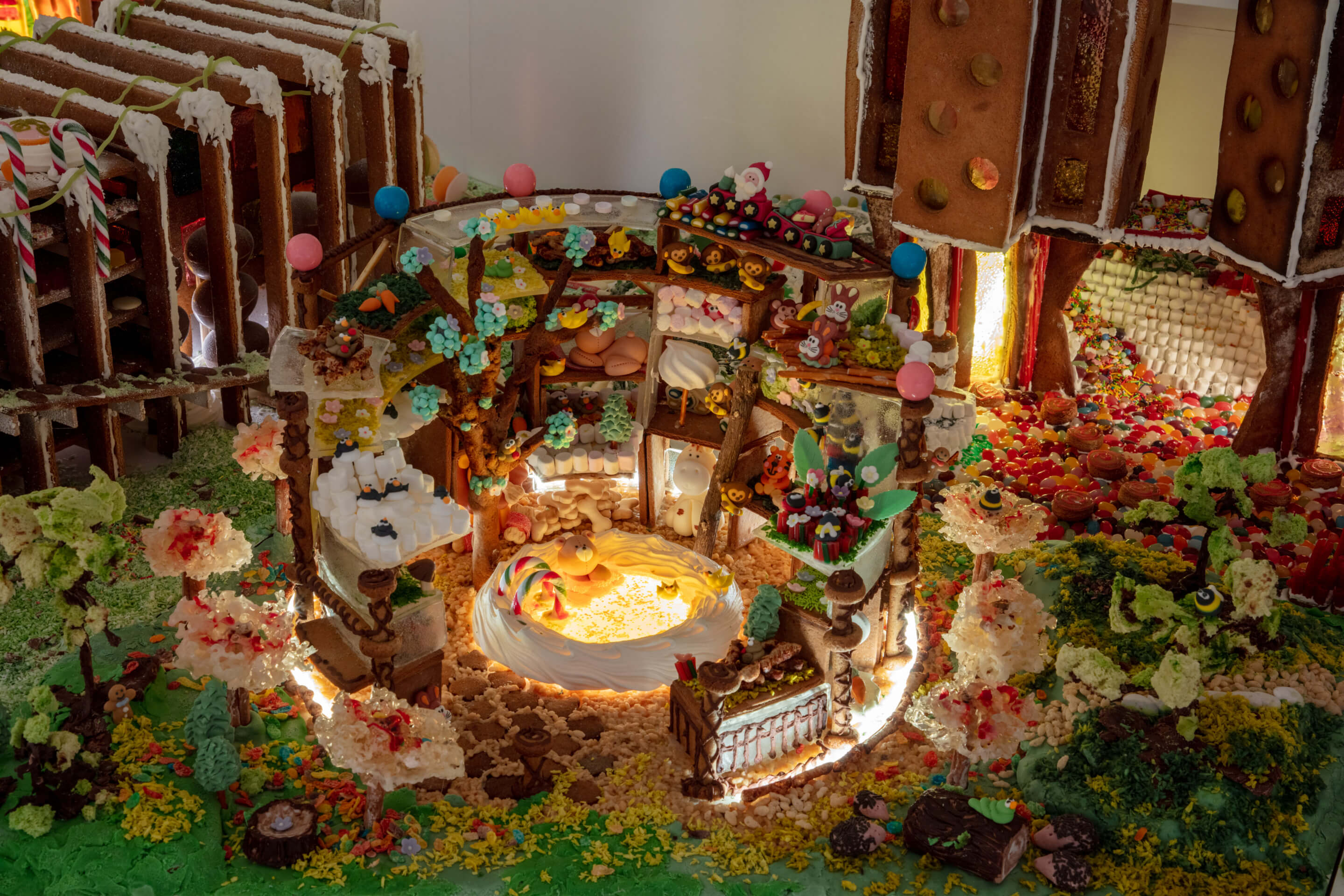
As mentioned, Gingerbread City runs through January 9 in Belgravia (it was previously held at Somerset House) and serves as a toothsome end-of-holiday treat for those who were unable to make it earlier in the season. Proceeds from ticket sales benefit the MoA Charity Fund and support programming and activities dedicated to “finding new ways for the public to engage with architecture and to encouraging entrepreneurship within architectural practice to further the industry.” A portion of ticket sales also supports the MoA Grant Giving Fund.
And for those nowhere near London, the Gingerbread City Instagram account has been posting fresh photos of the exhibition throughout its run.






